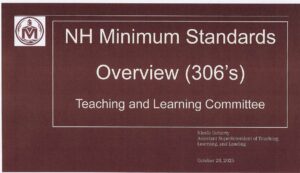Australian Women Granted Right to Sue Qatar Airways Over Airport Incident

Five Australian women have secured the right to sue Qatar Airways after a federal court upheld their appeal regarding invasive physical examinations they endured at Doha’s Hamad International Airport in 2020. The women, whose identities are protected, were among numerous female passengers subjected to these examinations following the discovery of an abandoned newborn at the airport.
On the day of the incident, the Qatari government stated that the examinations were necessary after a baby girl was found wrapped in plastic and buried in trash, describing the situation as a “shocking and appalling attempt to kill her.” Officials expressed regret for any distress caused to passengers but maintained that their actions were necessary to prevent the “perpetrators” from fleeing the country. This incident ignited international outrage and drew strong condemnation from Australia’s then Foreign Minister, labeling it a “grossly disturbing, offensive, concerning set of events.”
The total number of women examined during this incident remains unclear, but the five Australian women were part of a group of 13 taken off Qatar Airways flight 908, which was bound for Sydney. An Australian government spokesperson indicated that as many as ten flights were impacted by the incident.
Legal Developments and Implications
On Thursday, three judges from the Australian Federal Court unanimously determined that the initial ruling dismissing the relevance of the Montreal Convention was incorrect. This treaty governs airline liability and could significantly impact the women’s case.
“Our clients are thrilled with the outcome,” said their lawyer, Damian Sturzaker from Marque Lawyers. He noted that the women continue to bear emotional scars from the incident and expressed frustration over the lack of an apology or compensation. Article 17 of the Montreal Convention states that a carrier is liable for damages resulting from death or injuries incurred by passengers while aboard or during the boarding and disembarking process. The original judge had ruled that this article did not apply in this case.
Sturzaker emphasized that the journey for these women had not truly ended when they were taken off the plane. “They were taken off the plane at gunpoint to an ambulance that was under the wing of the plane, where our group was subjected to invasive physical examinations before being put back on the plane,” he explained.
In addition to their claims under the Montreal Convention, the women are also pursuing a negligence lawsuit against Qatar Airways, which could lead to increased damages. The case also initially included allegations of negligence, assault, false imprisonment, and battery against MATAR, the airport operator, and the Qatar Civil Aviation Authority (QCAA). However, the recent ruling concluded their action against QCAA while allowing amendments to their claims against MATAR.
Sturzaker indicated that the legal team will seek to clarify who was responsible for ordering the searches. “We don’t have perfect insight as to the levels of responsibility, and that’s one of the things that we will seek to determine as the case goes forward,” he said, pointing out that many requested documents had not been provided.
Background of the Incident
Following the alarming discovery of the abandoned baby, a Qatari prosecutor disclosed that several airport security staff responsible for conducting the examinations were charged. Additionally, the baby’s mother, described as of “Asian” nationality, was identified and charged with attempted murder, having left the country shortly after the incident. In Qatar, sex outside of marriage is criminalized, leading some women to abandon children to evade imprisonment.
Sturzaker criticized the Qatari response to the situation as “wildly out of proportion,” suggesting that such measures would not be typical in a travel-friendly environment.
As the legal proceedings move forward, the case is expected to go to trial next year, potentially shedding further light on the responsibilities of the airline and airport authorities involved in this controversial incident.






